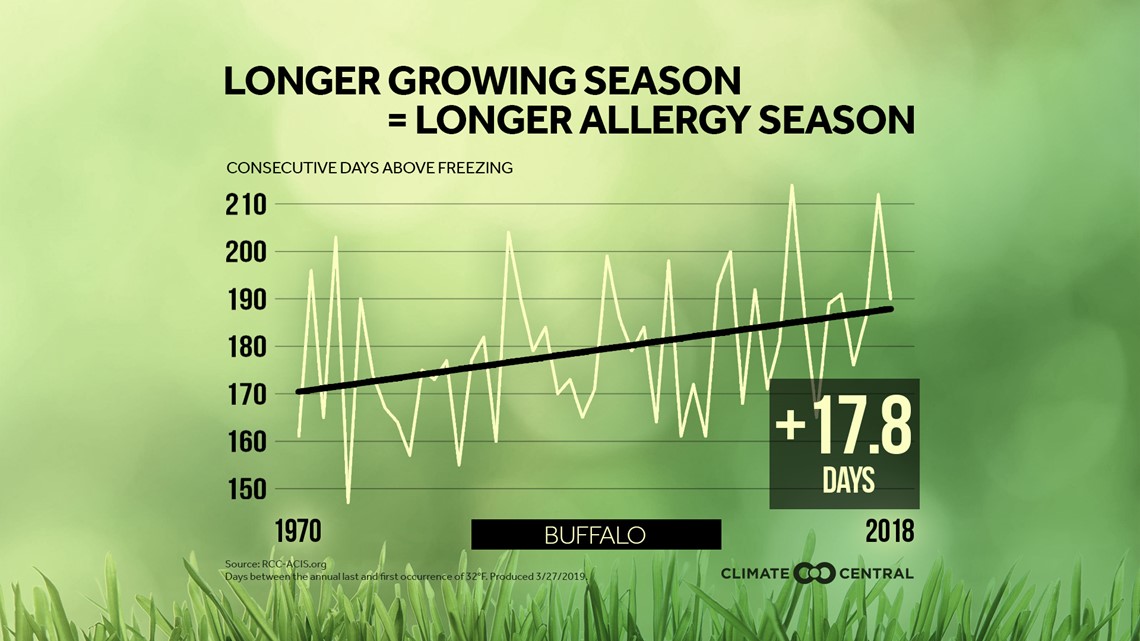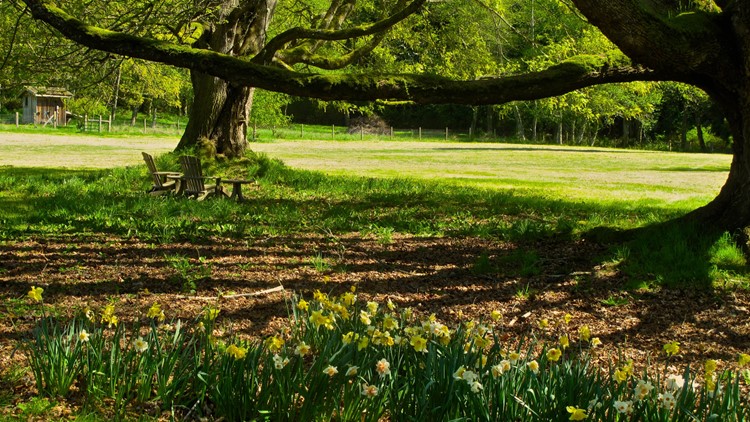BUFFALO, N.Y. — Even though Western New York's growing season doesn't typically begin until April, this mild and dry stretch throughout mid-March has helped kickstart the pollen season for the region.
Tree pollen is what dominates the early pollen season. But if you're sensitive to those allergens, especially Maple, Elm or Juniper pollen, then you may begin to feel it over the next few days.
A spike in tree pollen, or the onset of pollen season, typically coincides with a stretch where temperatures are well above freezing. On March 8, high temperatures reached over 50 degrees. And while a few chilly mornings followed with temperatures below freezing, there was a steady trend with afternoon high temperatures remaining above freezing since.
In addition, The American College of Allergy, Asthma and Immunology notes that a particularly rainy forecast period or spring can lead to rapid plant growth early on and extend the allergy season into the fall. In the recent spring outlooks released last week, Western New York was highlighted as potentially experiencing a spring with above-average temperatures and precipitation from April through June.
As for the growing season, that usually begins when there are no longer morning low temperatures at or below freezing in the forecast, which, for this region, doesn't usually happen until mid-April.
But there is a correlation between the length of the pollen and growing season, and climate data suggests both are becoming longer. Over the past 50 years, Buffalo has experienced an increase in the number of days in between the first and last day below freezing. That number is 17.8 days, extending the growing and pollen season by over two weeks.


Pollen season then transitions to grass pollen in May, weed pollen in July, and Ragweed by late August. Thought Ragweed isn't prevalent in Western New York, the entire pollen season can last from mid-March to mid-late September locally.
Keep in mind everyone's sensitivity to pollen, and allergens in general, is different and wide-ranging. It's not only the pollen category but specific type that can trigger a reaction. has resources and guidance for seasonal allergy suffers.
You can check local pollen impacts and the pollen forecast here.



